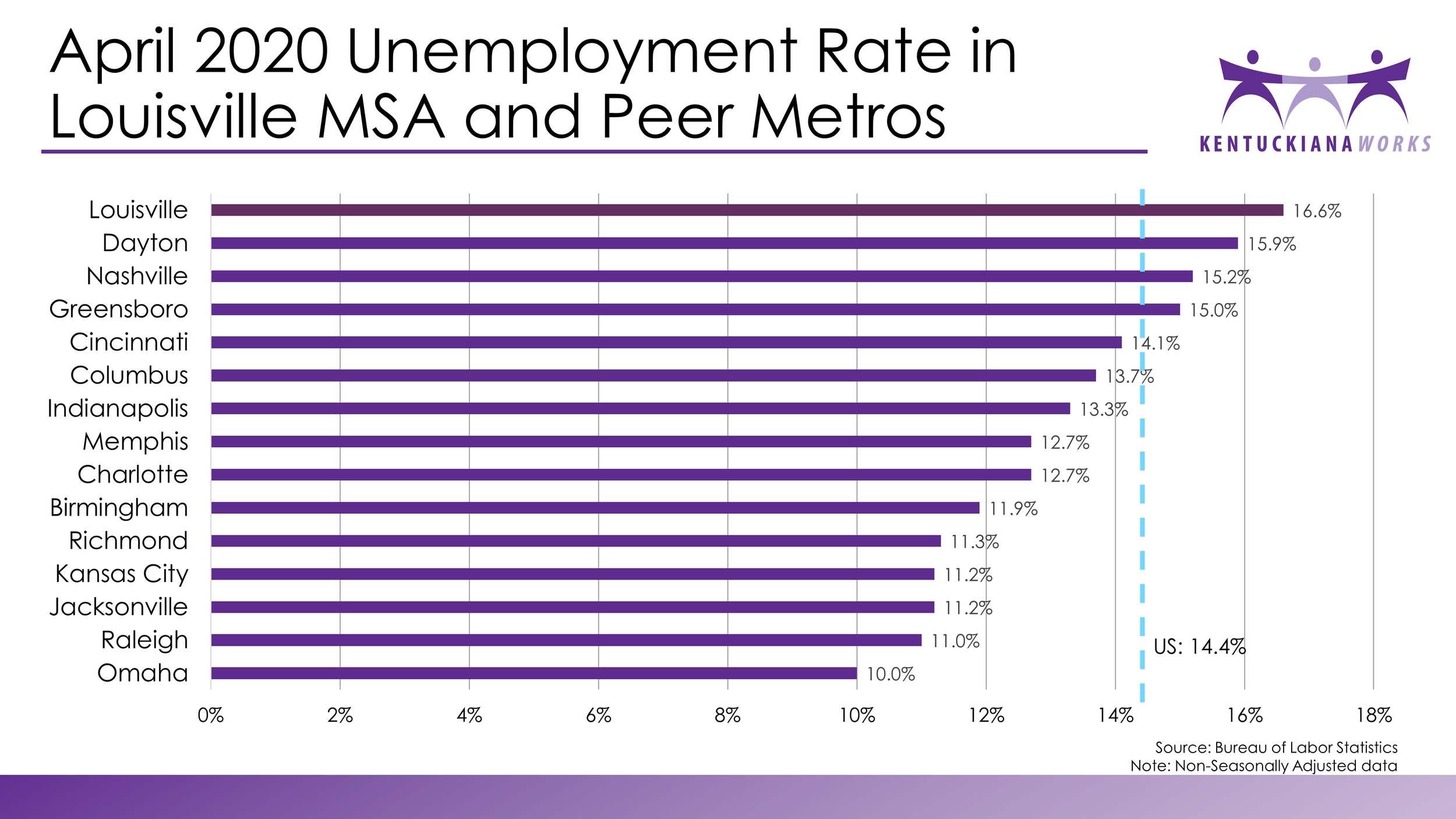The economic impact of the coronavirus pandemic in the Louisville region
Economic conditions in the United States have changed at an unprecedented rate in the last 90 days due to the COVID-19 pandemic, going from record-low unemployment rates to record-highs in just a few months. The closure of non-essential businesses and dramatic declines in consumer spending have left millions of workers jobless. New data released Wednesday from the Bureau of Labor Statistics sheds light on how the Louisville metropolitan region’s economy has been impacted by the coronavirus pandemic. The data reveals the local economic conditions in mid-April, at the height of the pandemic.
The Louisville region’s unemployment rate jumped to 16.6% in April, the highest rate ever recorded for the region. The previous record was hit during the slow recovery of the Great Recession, when in February 2010 the region’s unemployment reached 11.9%. Compared to April of last year, this year’s unemployment rate is 13.1 points higher.
The Louisville region’s April unemployment rate is higher than both the United States (14.4%) and Kentucky (16.1%). Among the nation’s 51 largest metropolitan areas (with a population of one million or more), the Louisville region has the 10th highest unemployment rate. The nation’s highest unemployment rates were in tourism metros including Las Vegas and New Orleans, and manufacturing metros including Detroit, Cleveland, and Buffalo. Louisville had the highest unemployment rate among its peer metros.
The number of payrolled, nonfarm jobs in the Louisville region fell dramatically in April, wiping out a decade of job growth. With 562,300 jobs in Louisville in April, the number of jobs has not been this low since February 2010. Compared to April of last year, the region lost 109,600 jobs.
The region’s job losses impacted some industries more than others. The leisure and hospitality sector accounted for nearly a third of the region’s job losses; manufacturing accounted for 20%.
There might be some reason for optimism, however. Nationally, nearly 8 out of 10 unemployed workers considered themselves on temporary layoff. Since April, some regional employers have begun to reopen and recall workers they laid off in March and April. It will take some time to see how many workers have truly experienced a temporary layoff, versus those who have been more permanently displaced. Impacts to the leisure and hospitality sector might be particularly hard-felt, as social distancing guidelines limit capacity and consumers continue to reckon with the fear and uncertainty of both the virus and economic fall-out.
As of the end of May, the region’s weekly online job postings have begun to rebound, perhaps indicating some employers are lifting hiring freezes.
The number of people filing for unemployment insurance (UI) in the Louisville region has also declined steadily since reaching a peak at the end of March. Even so, the number of initial claims filed in mid-May far exceeds the level of claims seen before the pandemic. Since the beginning of March, a quarter of the region’s labor force has filed a UI claim. Workers who have been temporarily laid off, permanently laid off, and those with a significant reduction in their hours are eligible for unemployment insurance.
As the region’s local workforce boards, KentuckianaWorks and WorkOne Southern Indiana are here to help displaced workers. Services for the local workforce are free, and include job search, career planning, resume building, interview prep, skills training, and employer referrals. While the physical career centers remain closed, services are still being provided virtually. Check out the resources available here and here.






